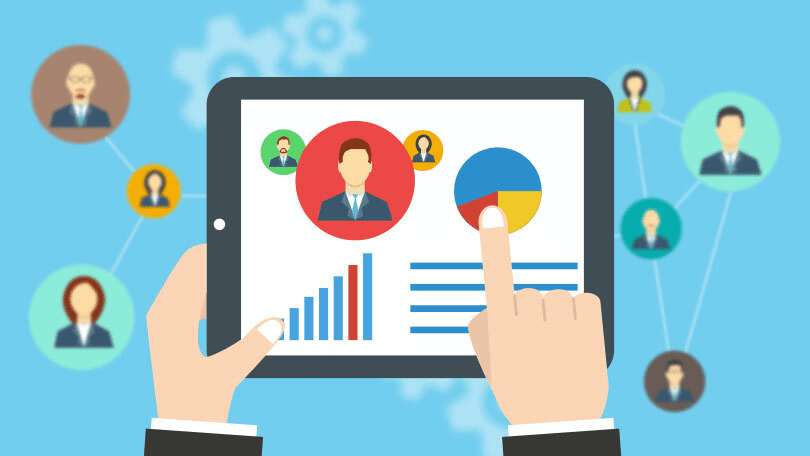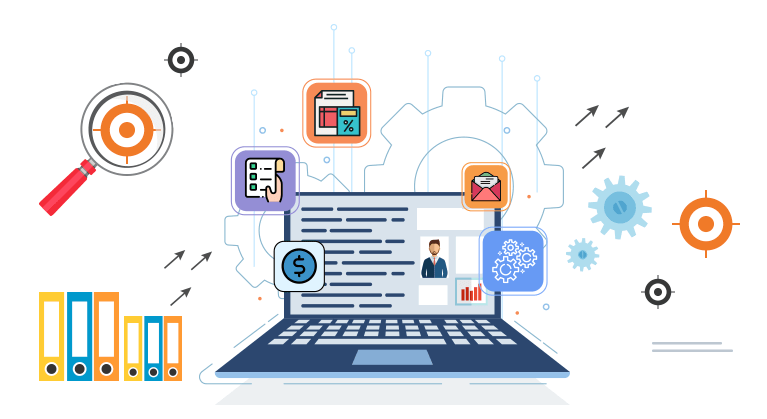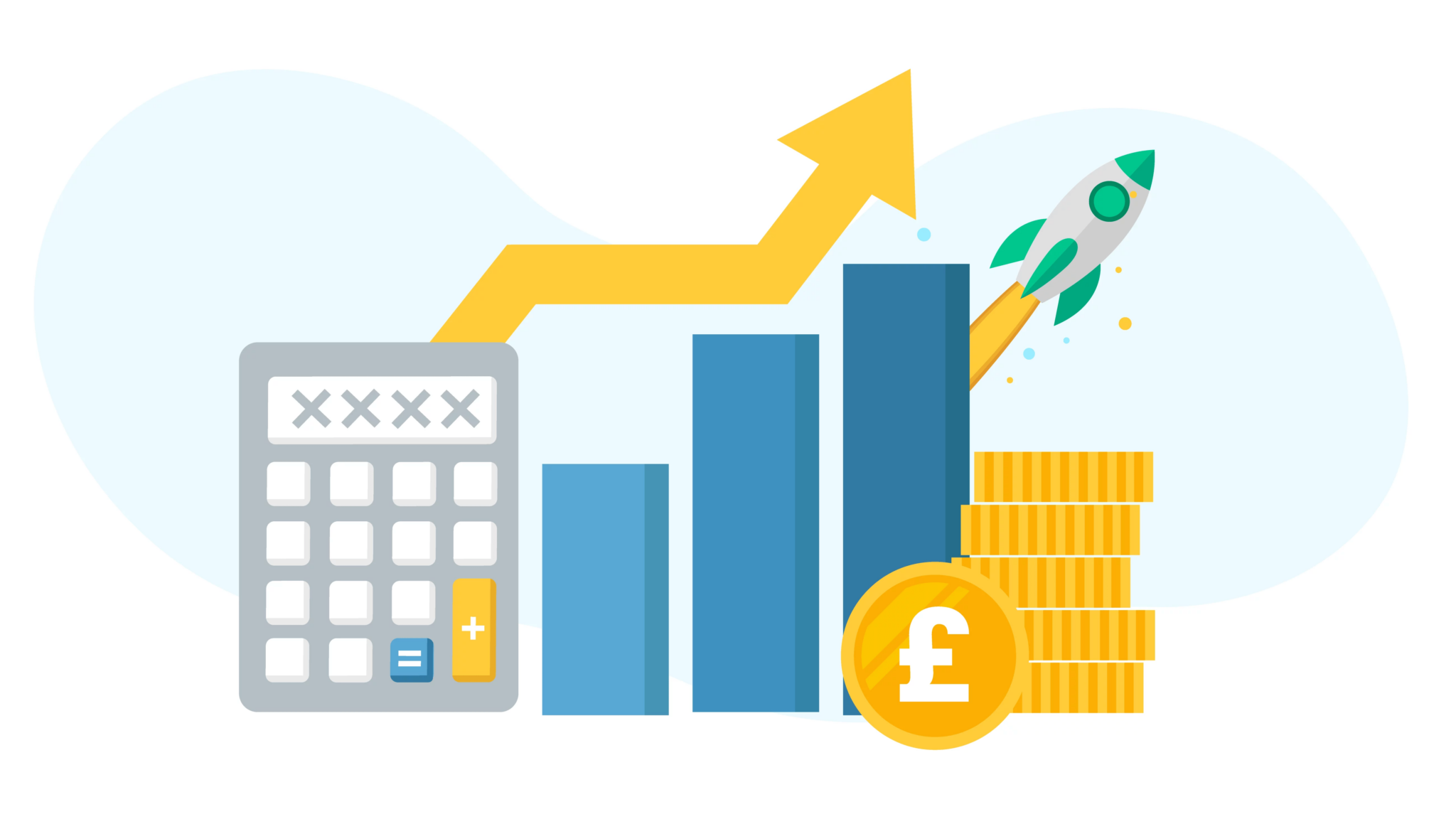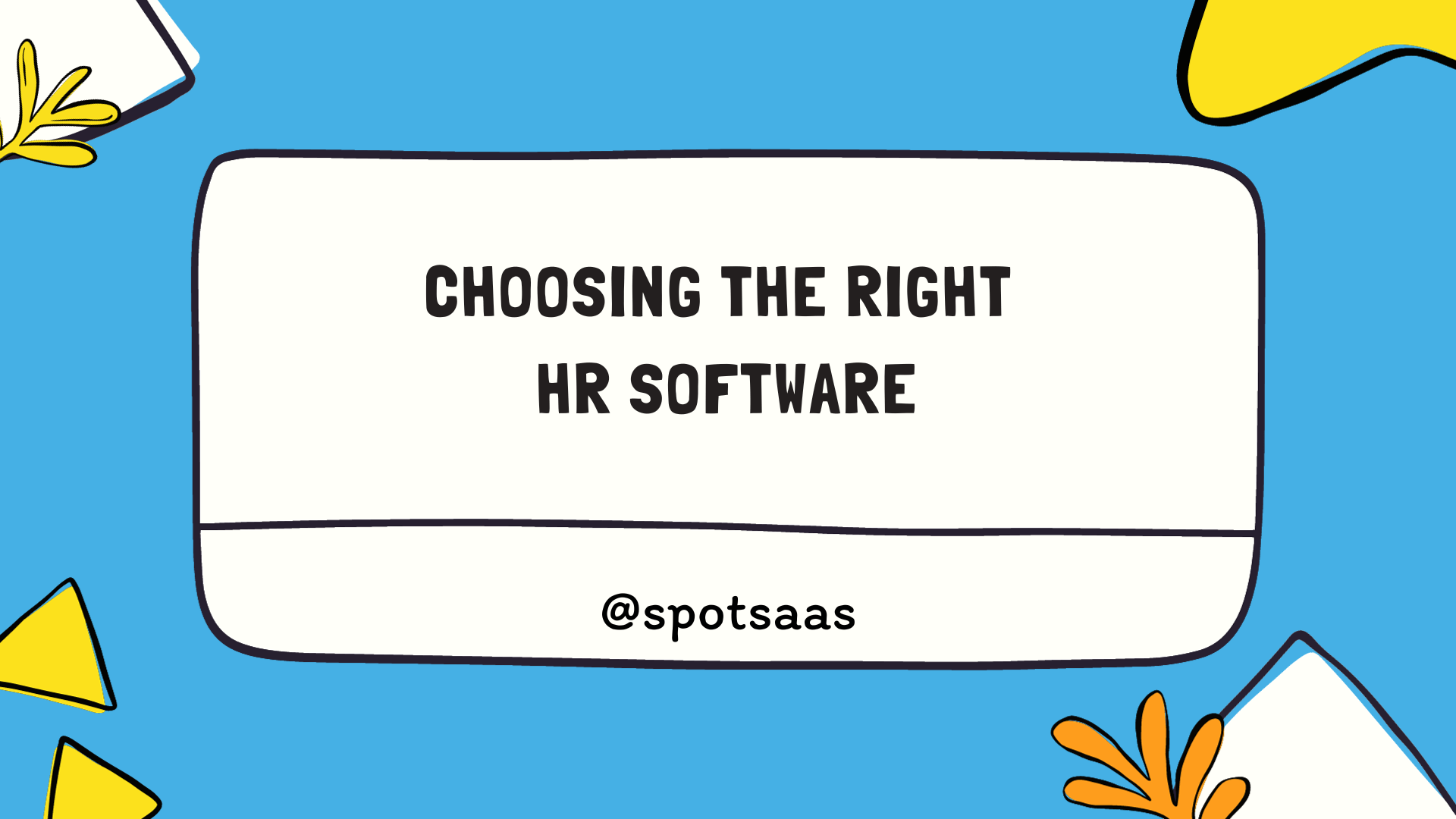Choosing the ideal SaaS HR software can sometimes feel like trying to solve a complex puzzle, amid an abundance of options and features that leave you feeling bewildered. Trust me, I’ve experienced this maze-like situation myself but have found comfort in digging deep into research on this topic.
This blog is here to offer you a simple yet detailed map guiding you through the various types of software available, helping pinpoint your business needs so you can make an informed choice suited specifically to you.
Key Takeaways
- SaaS HR software offers benefits such as reduced costs, increased flexibility, automatic data backups, and scalability.
- There are three main types of HR software: HRMS, HCM, and HRIS. Each serves different functions within an organization.
- When choosing HR software, consider your specific business needs, customization options, security features, and integration capabilities.
- Thoroughly research vendors to ensure they have a reliable track record and can meet your organization’s requirements.
- Make a shortlist of potential options based on your business needs and goals before testing and implementing the software.
Understanding SaaS HR Software
SaaS HR software, also known as Software-as-a-SaaS HR software, offers numerous benefits for organizations looking to streamline their human resources processes. It encompasses various types of systems such as HRMS, HCM, and HRIS, each serving different functions within an organization.
Definition and benefits
SaaS HR software stands for “Software as a Service” Human Resources software. This type of cloud-based solution offers significant benefits to businesses by minimizing overhead costs such as those associated with hardware and maintenance operations.
With SaaS HR solutions, your organization can access advanced features from any location, which enhances flexibility and allows remote work capabilities. Data backups happen automatically so the risk of data loss is greatly reduced.
Moreover, upgrades and updates are handled by the vendor without disrupting your business operations or having to involve in-house IT staff. Finally, scalability is an integral advantage of this model; you can easily adjust your service usage according to business growth or contraction needs over time.

Types of HR software: HRMS vs HCM vs HRIS
Before we dive into the factors to consider when choosing HR software, it’s crucial to understand the different types of HR software. Essentially, there are three main categories: Human Resource Management System (HRMS), Human Capital Management (HCM), and Human Resource Information System (HRIS). Each caters to specific needs but they overlap in many areas.
| Type | Description | Key Features |
|---|---|---|
| HRMS (Human Resource Management System) | A software that handles the day-to-day operations of human resources, blending HR functions and processes with information technology. | Recruitment, training, performance analysis, payroll, benefits administration |
| HCM (Human Capital Management) | An approach to employee staffing that perceives people as assets (human capital) whose current value can be measured and whose future value can be enhanced through investment. | Talent management, workforce planning, compensation management, time and labor management |
| HRIS (Human Resource Information System) | A software or online solution that aids companies in managing employee data for payroll, benefits, personnel files, performance management and more. | Payroll, benefits tracking, leave management, reporting, self-service module for employees |
When selecting an HR software, it’s important to consider your specific business needs, scalability, customization, security, and integration capabilities. It’s not a one-size-fits-all solution, so take your time to identify the features that are most relevant for your business. There are plenty of SaaS providers out there, like Bamboo HR, so you’re bound to find a fitting solution. Having the right HR software will optimize HR processes and make managing daily HR tasks efficient and effective.
Factors to Consider When Choosing HR Software
When choosing HR software, it is crucial to consider factors such as identifying business needs, researching vendors, making a shortlist, and testing and implementing the software.
Identifying business needs
To make the best decision on HR software, I first focus on my business needs. I map out specific areas that need improvement or automation within my HR processes. For instance, if tracking employee time and attendance manually is causing inefficiencies, a system with this feature becomes a priority.
Or perhaps recruiting methods could use some streamlining for quicker hiring; in that case, an applicant tracking system comes to the forefront of requirements. Identifying these necessities upfront saves me from investing in unnecessary features and drives me towards solutions that genuinely solve my business challenges.
Researching vendors
To ensure you choose the right SaaS HR software for your organization, it’s essential to thoroughly research vendors. This step involves evaluating multiple options and gathering information about each vendor’s reputation, experience, and customer feedback.
Consider factors such as the vendor’s track record in delivering reliable solutions, their level of customer support, and their ability to customize the software to meet your specific needs.
By conducting thorough research on vendors, you can make an informed decision and select a provider that aligns with your business goals and requirements.
Making a shortlist
To make the process of choosing HR software more manageable, it’s essential to create a shortlist of potential options. Here are some steps to help you narrow down your choices:
| Step | Description |
|---|---|
| 1 | Identify your business needs and goals by determining necessary features and functionalities, considering aspects like employee self-service, payroll management, time tracking, performance management, and recruitment. |
| 2 | Research vendors by conducting thorough market research, focusing on companies known for quality products and excellent customer support. |
| 3 | Evaluate product demos from shortlisted vendors, exploring user interface, navigation, and overall usability, ensuring the system is intuitive and aligns with organizational workflows. |
| 4 | Seek input from stakeholders, involving key personnel like HR managers and department heads in decision-making and gathering feedback on the software options being considered. |
| 5 | Consider scalability and customization, assessing the software’s ability to grow with your organization and its customization capabilities to meet unique business requirements. |
Testing and implementing
I highly recommend thoroughly testing and implementing the HR software before making a final decision. Here are some key steps to follow during this process:
| Step | Description |
|---|---|
| 1 | Conduct a trial period by requesting a trial version of the software to test its functionality and performance, ensuring it fulfills your specific needs. |
| 2 | Evaluate user-friendliness by assessing the software’s ease of navigation and use, considering whether extensive training is needed or if the platform is intuitive for quick employee adoption. |
| 3 | Test data migration capabilities to ensure that the software can seamlessly migrate existing HR data without loss or corruption, saving time and effort in manual data input. |
| 4 | Check integration capabilities to ensure the software can integrate with other organizational tools and systems, such as payroll or performance management platforms, for smooth communication and workflow. |
| 5 | Analyze reporting and analytics features by exploring the types of reports and analytics provided, ensuring the functionality aligns with your organization’s reporting needs. |
| 6 | Seek feedback from users by involving key stakeholders in software testing to gather input on its usability, effectiveness, and alignment with their job functions. |

Key Considerations for Choosing the Right HR Software
When choosing the right HR software, it is essential to consider core HR features, budgeting and pricing options, as well as implementation and customization capabilities. By carefully evaluating these key considerations, you can ensure that you select an ideal HRMS software for your business needs.
Read on to discover more about making the right choice for your organization.
Core HR features
Choosing the right HR software for your organization involves considering a range of factors. One key aspect to evaluate is the core HR features that software offers. These features are essential for managing daily HR tasks and ensuring smooth operations. When assessing HR software options, here are some important core HR features to look for:
| Aspect | Key Considerations |
|---|---|
| Employee Information Management | Ease of storing and accessing employee data, including personal details, job history, and performance records. |
| Time and Attendance Tracking | Effective time tracking, attendance monitoring, and streamlined leave management processes. |
| Payroll Management | Ability to handle salary calculations, tax deductions, and direct deposit functionalities. |
| Benefits Administration | Capabilities to streamline benefits enrollment, manage employee benefits packages, and track eligibility periods. |
| Performance Management | Provision of tools for setting goals, conducting performance reviews, and tracking employee development plans. |
| Recruitment and Onboarding | Features like Applicant Tracking Systems (ATS), interview scheduling, background checks, and organized onboarding workflows. |
| Compliance Management | Inclusion of compliance features to assist in adherence to labor laws and regulations. |
| Reporting and Analytics | Robust reporting capabilities to generate customized reports on vital HR metrics. |

Budgeting and pricing options
When choosing the right SaaS HR software, budgeting and pricing options play a crucial role. It’s important to consider the costs involved in implementing and maintaining the software, as well as any additional fees for upgrades or support.
Take into account your organization’s budgetary constraints and weigh them against the features and functionalities offered by different vendors. Look for transparency in pricing structures and ensure there are no hidden costs that could impact your overall investment.
One key consideration is whether the pricing model aligns with your business needs. Some vendors offer subscription-based models, where you pay a monthly or annual fee per user, while others may charge based on the number of employees in your organization.
Additionally, it’s essential to evaluate what is included in the base price and if there are any add-ons or customization options that come at an extra cost. Consider whether these add-ons are necessary for your organization or if they can be added later as needed.
Implementation and customization
Implementing and customizing your chosen SaaS HR software is a crucial step towards optimizing your HR processes. During implementation, you will need to consider factors such as data migration, training for employees, and integrating the new system with existing ones.
Customization allows you to tailor the software to meet your organization’s specific needs by configuring settings and workflows. By focusing on these aspects, you can ensure a smooth transition and maximize the benefits of your new HR software solution.
Cloud-based vs traditional HR systems
The debate between cloud-based and traditional HR systems is a common one when it comes to choosing the right HR software. Here’s a comparison of the two:
| Cloud-Based HR Systems | Traditional HR Systems |
|---|---|
| Cloud-based HR systems streamline HR tasks by offering functionalities that are easily accessible from anywhere and anytime. | Traditional HR systems are generally on-premise installations, requiring physical infrastructure and resources. |
| These modern HR systems, like Bamboo HR, are scalable which makes them suitable for businesses of different sizes. | Traditional systems may not have the same degree of scalability which can limit their usability for growing businesses. |
| Cloud-based systems are generally customizable, allowing businesses to tailor the software to fit their specific needs. | Customizability can be limited in traditional systems, which may result in a software that doesn’t completely streamline HR processes. |
| With SaaS solutions like cloud-based HR software, up-front investment costs are typically lower, making it a budget-friendly option. | Traditional HR systems usually involve significant up-front investment, and may also require continued maintenance costs. |
| Cloud-based systems offer enhanced security features, as well as seamless integration capabilities with existing HR systems. | Despite their longstanding presence, traditional HR systems may not always offer the same level of security or integration capabilities. |
This simple comparison illustrates the advantages of cloud-based systems over traditional ones, making them an ideal choice for businesses looking to optimize their HR processes.
Suitability for small and medium-sized businesses
Small and medium-sized businesses (SMBs) often have unique needs when it comes to HR software. They require a solution that is scalable, cost-effective, and easy to implement. SaaS HR software can be an excellent choice for SMBs because it offers flexibility and affordability.
With its cloud-based nature, SaaS HR software eliminates the need for on-premises infrastructure, making it accessible from anywhere with an internet connection. This means that SMBs can save on IT costs while still benefiting from robust HR functionality.
In addition, many SaaS HR software providers offer tiered pricing plans that cater specifically to the needs and budgets of SMBs. By choosing the right SaaS HR software, small and medium-sized businesses can efficiently manage their human resources without overburdening their resources or budget.
Integration with existing HR systems
Integrating new HR software with existing HR systems is a crucial consideration when choosing the right SaaS solution for your organization. Seamless integration ensures that data flows smoothly between different platforms, eliminating the need for manual data entry and reducing errors.
It also allows you to leverage existing investments in HR systems and ensure continuity in processes. When evaluating potential HR software options, it’s important to look for solutions that offer easy integration capabilities with your current systems, such as payroll, time tracking, or performance management tools.
This will enable you to create a unified ecosystem that streamlines workflows and improves efficiency across your organization.
Benefits for different business sizes
Businesses of all sizes can benefit significantly from using SaaS HR software. The following table provides a breakdown of the benefits according to business size.
| Business Size | Benefits |
|---|---|
| Small Business | SaaS HR software can automate tedious tasks, saving valuable time. It provides easy access to HR data, which can be extremely beneficial for decision-making processes. As small businesses usually operate with limited HR staff, the software can significantly reduce workload. |
| Medium Business | For medium-sized businesses, SaaS HR software takes care of the heavy lifting, allowing HR staff to focus on strategic tasks. It enables a more streamlined and efficient onboarding process. In addition, medium-sized businesses often require robust reporting capabilities, which is a key feature of most HR software. |
| Large Business | Large businesses often need to handle complex and high-volume HR tasks. SaaS HR software can manage these efficiently while providing advanced data analytics and report generation. Large businesses also benefit from features such as employee self-service portals, performance management tools, and integration capabilities with existing HR systems. |
Choosing the right SaaS HR software does not need to be a daunting task, and the benefits can be transformative regardless of the size of your business.
Investment cost
Investment cost is a crucial consideration when choosing the right SaaS HR software for your business. It’s important to evaluate the pricing options and determine if they align with your budget.
Consider factors like subscription fees, implementation costs, and any additional charges for customization or integrations. Keep in mind that while some solutions may have lower upfront costs, others may offer more value over time with added features and scalability.
By carefully assessing the investment cost of different HR software options, you can make an informed decision that meets your organization’s financial requirements without compromising on functionality or future growth potential.

Conclusion
In conclusion, choosing the right SaaS HR software doesn’t have to be a daunting task. By following the five easy steps outlined in this guide and considering important factors such as product features, customization options, and integration capabilities, you can confidently select an ideal HRMS software that aligns with your organization’s needs and goals.
With the right software in place, you’ll be able to streamline your HR processes and optimize daily tasks for improved efficiency and effectiveness. So take control of your HR management journey today by making an informed decision when it comes to selecting the perfect SaaS HR solution for your business.
Frequently Asked Questions
What is SaaS HR software?
SaaS HR software refers to a cloud-based solution that helps businesses manage their human resources functions, such as employee data, payroll, benefits administration, and performance management.
Why is it important to choose the right SaaS HR software?
Choosing the right SaaS HR software is important because it can streamline and automate HR processes, improve efficiency, enhance employee experience, and ensure compliance with regulations.
How do I determine which SaaS HR software is right for my business?
To determine the right SaaS HR software for your business, consider factors such as your specific HR needs and goals, scalability of the system, ease of use, integration capabilities with existing systems, customer support options.
Can I customize the features of SaaS HR software?
Yes, many SaaS HR software solutions offer customization options that allow you to tailor certain features or workflows based on your unique requirements.
Is there a trial period or demo available for testing out different SaaS HR software options?
Yes, most providers offer a trial period or demo where you can test out their SaaS HR software to see if it meets your needs before making a purchase decision.




